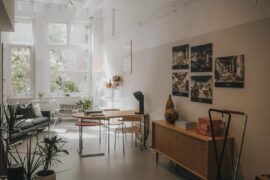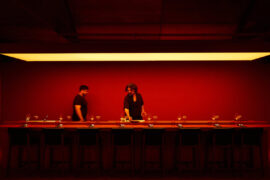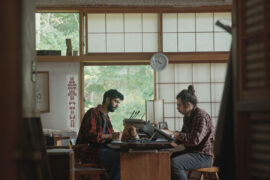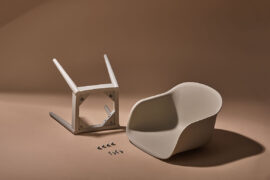Nearly three decades of lighting design practice and research inform Lighting Planners Associates’ robust approach to the possibilities of lighting for architecture and beyond. Always, a sense of the natural prevails.

Yusuke Hattori (Managing Director, left), Kaoru Mende (centre, Principal) and Reiko Kasai (right, Managing Director) at LPA's Singapore studio in Neil Road. Photo by Justin Loh / Shining Head Media
August 15th, 2017
“No matter how much lighting technology develops, we will never forget the beauty of fire and sunlight.” Yusuke Hattori, Associate Director at Lighting Planners Associates (LPA), shares the mantra of this leading Tokyo-, Singapore- and Hong Kong-based lighting design studio.
“We foresee that the interaction or interface with light will change, and light will become more personalised,” adds Managing Director Reiko Kasai. She continues, “Light could itself become a material, with the latest wearable technology. But in the end our goal is to pursue a comfortable relationship with light, and we feel most comfortable in natural light, which is not static. That is why we like fire and sunlight.”
With potentially disruptive advances in technology continually looming, LPA – a forerunner in the lighting design industry – anticipates that the interactions of humans with their spaces will be transformed. Lighting, expects LPA, will become intelligent, encoding data from its environment into useful information. It will also become more convenient. Users with special needs will be able to control their environments more easily. And lighting will become more ambient. In future homes, light fittings that have always been positioned on the ceiling might be dissolved into wall finishes and luminous materials.
Perhaps most pertinently, lighting will become better at simulating the calming gradations and movement of natural light, unlike the static nature of much of today’s artificial lighting. To LPA, the basal human fascination with the beauty of natural light is something that will remain unchanged. “We hope that technology can also create that kind of space with artificial light. We always remind ourselves, in everything, to learn from nature,” notes Kasai.
Founded in Japan by Kaoru Mende (Principal) in 1990, LPA is considered to be a pioneer of the architectural lighting practice in the Asia Pacific region. The studio set up an office in Singapore ten years later, and has since branched into Hong Kong to oversee multiple projects in China. TLPA’s wide-ranging portfolio of almost 700 projects over a span of 25 years includes luminary collaborations with Toyo Ito, Tadao Ando, Rafael Vinoly and Kazuyo Sejima, as well as many prominent projects such as Gardens by the Bay, the Victoria Concert Hall, the National Gallery Singapore, Sendai Mediatheque, Minna no Mori, Aman Tokyo, Tower of Winds and Tokyo International Forum.
Read the complete article in Cubes 87, out now!
INDESIGN is on instagram
Follow @indesignlive
A searchable and comprehensive guide for specifying leading products and their suppliers
Keep up to date with the latest and greatest from our industry BFF's!

For a closer look behind the creative process, watch this video interview with Sebastian Nash, where he explores the making of King Living’s textile range – from fibre choices to design intent.

For those who appreciate form as much as function, Gaggenau’s latest induction innovation delivers sculpted precision and effortless flexibility, disappearing seamlessly into the surface when not in use.

Sydney’s newest design concept store, HOW WE LIVE, explores the overlap between home and workplace – with a Surry Hills pop-up from Friday 28th November.

Merging two hotel identities in one landmark development, Hotel Indigo and Holiday Inn Little Collins capture the spirit of Melbourne through Buchan’s narrative-driven design – elevated by GROHE’s signature craftsmanship.

According to Le Corbusier, the struggle for it underpins the history of architecture. Frank Lloyd Wright described it as a “beautifier of buildings”. And Motoko Ishii famously equated it to life itself. Indispensable, life-affirming and metamorphic, light underpins all architectural and design efforts.

Our cities are not only oversaturated with light, they are made all the worse with bad lighting schemes that don’t consider people. Enter the CRI Awards – awards for awful lighting.
The internet never sleeps! Here's the stuff you might have missed

Located in the former Madam Brussels rooftop, Disuko reimagines 1980s Tokyo nightlife through layered interiors, bespoke detailing and a flexible dining and bar experience designed by MAMAS Dining Group.

AHEC has produced a documentary exploring forestry and stewardship through long-term forest management and human responsibility.

MillerKnoll releases the 2025 Better World Report showcasing how design can drive meaningful change through measurable progress across social, environmental and governance initiatives